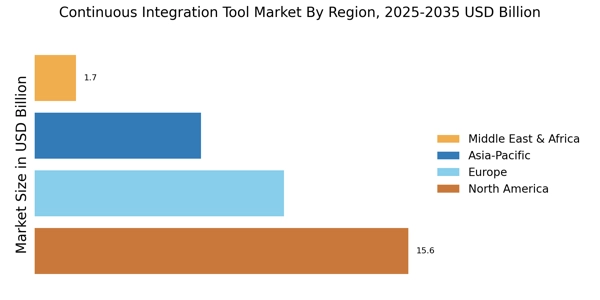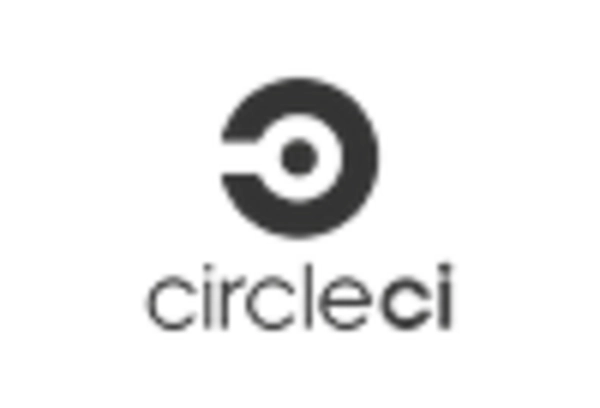Emergence of Cloud-Based Solutions
The Continuous Integration Tool Market is being transformed by the emergence of cloud-based solutions. Cloud computing offers scalability, flexibility, and cost-effectiveness, making it an attractive option for organizations seeking to implement continuous integration practices. Cloud-based continuous integration tools enable teams to access resources and collaborate from anywhere, facilitating remote work and enhancing productivity. Market analysis suggests that the adoption of cloud-based continuous integration tools is projected to grow by 25% over the next few years. This growth is driven by the increasing need for organizations to streamline their development processes while minimizing infrastructure costs. As cloud technology continues to evolve, the Continuous Integration Tool Market is likely to benefit from the widespread adoption of these innovative solutions.
Increased Focus on DevOps Practices
The Continuous Integration Tool Market is witnessing a notable increase in the adoption of DevOps practices. DevOps emphasizes collaboration between development and operations teams, aiming to streamline the software delivery process. Continuous integration tools are integral to this approach, as they facilitate seamless integration and deployment of code changes. The integration of continuous integration tools within DevOps frameworks has been shown to enhance deployment frequency by up to 50%, allowing organizations to deliver features and updates more rapidly. As businesses strive for operational efficiency and improved collaboration, the demand for continuous integration tools is expected to grow. This trend indicates a promising future for the Continuous Integration Tool Market, as more organizations recognize the value of integrating these tools into their DevOps strategies.
Rising Complexity of Software Systems
The Continuous Integration Tool Market is significantly influenced by the increasing complexity of software systems. As applications become more intricate, the need for robust integration and testing solutions becomes paramount. Organizations are facing challenges in managing dependencies, ensuring compatibility, and maintaining quality across various components. Continuous integration tools provide essential support in addressing these challenges by automating the integration process and enabling continuous testing. This automation not only enhances the reliability of software releases but also reduces the risk of integration issues. Market data indicates that companies utilizing continuous integration tools report a 40% decrease in integration-related errors. Consequently, the rising complexity of software systems is likely to drive the demand for continuous integration tools, thereby fostering growth in the Continuous Integration Tool Market.
Growing Demand for Agile Development Practices
The Continuous Integration Tool Market is experiencing a surge in demand for agile development practices. Organizations are increasingly adopting agile methodologies to enhance their software development processes. This shift is driven by the need for faster delivery of software products and the ability to respond swiftly to changing market conditions. According to recent data, the adoption of agile practices has led to a 30% increase in development efficiency for many companies. Continuous integration tools play a crucial role in facilitating these practices by automating testing and integration processes, thereby reducing the time required for software releases. As more organizations recognize the benefits of agility, the demand for continuous integration tools is expected to rise, further propelling the growth of the Continuous Integration Tool Market.
Growing Emphasis on Software Quality Assurance
The Continuous Integration Tool Market is significantly impacted by the growing emphasis on software quality assurance. As organizations strive to deliver high-quality software products, the role of continuous integration tools becomes increasingly vital. These tools facilitate automated testing and validation processes, ensuring that code changes do not introduce defects. Recent studies indicate that companies implementing continuous integration practices experience a 30% reduction in post-release defects. This focus on quality assurance is driving organizations to invest in continuous integration tools that enhance their testing capabilities. As the demand for high-quality software continues to rise, the Continuous Integration Tool Market is expected to expand, reflecting the critical role of these tools in maintaining software integrity.


















Leave a Comment